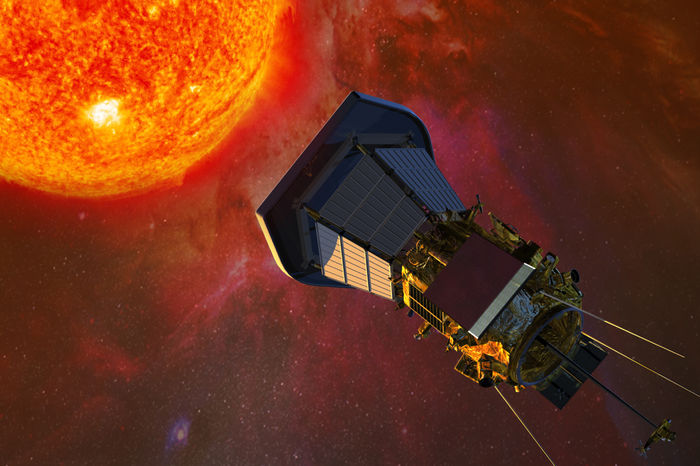Research Roundup: Week Three
Bibi Boyce breaks down the most recent scientific discoveries

Black holes can feed themselves
Research completed by a team in Santiago, Chile has demonstrated that outbursts from supermassive black holes cools gas, which then ‘feeds’ the black hole. Using data from NASA’s Chandra X-Ray observatory and Very Large Telescope, they were able to study the relationship between these outbursts and the filaments of gas which fuel the black holes.
Active Galactic Nuclei (AGN) are bright regions in the centre of galaxies which are powered by a supermassive black hole (over 100,000 times the mass of the Sun) as it feeds on the surrounding material in its accretion disc. This is a large collection of hot matter orbiting the black hole, similar to Saturn’s rings only on a much larger scale. Some accretion discs produce high energy jets which emit plasma, the state above gas, where it is so hot (6,000-10,000°C) that atoms lose electrons and become ionised. When these jets are particularly powerful this is known as an outburst.
"Some accretion discs produce high energy jets which emit plasma, the state above gas, where it is so hot (6,000-10,000°C) that atoms lose electrons and become ionised"
According to the model researched, these outbursts provide hot plasma which then cools to form narrow filaments: long thin streams of gas that connect galaxy clusters, forming a cosmic web. They lead back into black holes, sending material onto the accretion disc. When mass falls into the black hole, it loses a huge amount of potential energy which is then emitted by the black hole via an outburst, which provides plasma to repeat the cycle. Essentially, as NASA has said, black holes can ‘cook for themselves’.
The team in Chile, led by Valeria Olivares, validated this model by confirming the prediction that there is a relationship between the brightness of the filaments of hot and warm gas in the centres of galaxy clusters. This specific result has also been observed in the tails of jellyfish galaxies, so called after the way their gas is dragged out behind them as they move through space. This similarity is unexpected and implies a common process, providing us with valuable information about star formation as well as black holes.
Alligators could help mitigate climate change
American alligators have a significant impact on the carbon cycle in their native ecosystems, as shown by a team at Southeastern Louisiana University through soil analysis.
The carbon cycle describes how carbon is stored in the earth, and how it transfers between the atmosphere, biosphere (flora and fauna), ocean and ground. Understanding the carbon cycle and how human activity disrupts it are essential for being able to mitigate climate change. For example, carbon dioxide can dissolve into the ocean. This solubility decreases as the ocean warms, releasing carbon dioxide. Increasing the concentration of carbon dioxide in the atmosphere contributes to the greenhouse effect, warming the earth and the ocean further – leading to more carbon dioxide being released.
"there is a positive correlation between alligator demography and tidally-influenced carbon sequestration (i.e. carbon held out of the atmosphere in coastal regions)"
Apex predators sit at the top of the food chain and regulate the abundance and behaviour of herbivores and bioturbators (organisms that move soil or sediment). It was observed that in wetland ecosystems across North America, especially mangroves, there is a positive correlation between alligator demography and tidally-influenced carbon sequestration (i.e. carbon held out of the atmosphere in coastal regions). Similar trends have been observed between the brown bear and the nitrogen cycle.
This adds another aspect to the impending pressures of climate change. Increased temperatures and rapidly changing habitats disturb the restorative balance previously present in the wetlands, as well as in other biomes. In doing so, it prevents them from sequestering carbon dioxide. This could accelerate the effects of climate change, showing a similar pattern of positive feedback as in the warming of the ocean.
Want to share your thoughts on this article? Send us a letter to letters@varsity.co.uk or by using this form.
 News / Cambridge launches plan to bridge ‘town and gown’ divide27 October 2025
News / Cambridge launches plan to bridge ‘town and gown’ divide27 October 2025 News / Uni offers students £55k in payouts31 October 2025
News / Uni offers students £55k in payouts31 October 2025 News / Students launch women’s society excluding trans women31 October 2025
News / Students launch women’s society excluding trans women31 October 2025 News / College rowing captains narrowly vote to exclude trans women31 October 2025
News / College rowing captains narrowly vote to exclude trans women31 October 2025 Arts / Reflections on the Booker Prize 202528 October 2025
Arts / Reflections on the Booker Prize 202528 October 2025










